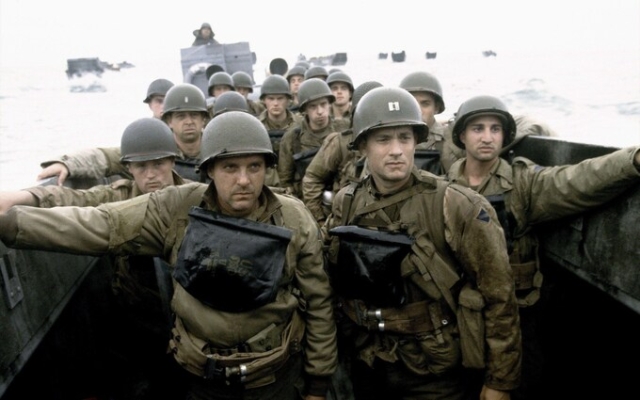 'It has done more than any other film to change the public's perception of combat than any other film since' ;: Saving Private Ryan Credit & Copyright: Alamy
'It has done more than any other film to change the public's perception of combat than any other film since' ;: Saving Private Ryan Credit & Copyright: Alamy
In the summer of 1998, Steven Spielberg was on a promotional tour for Saving Private Ryan. In an interview with The New Yorker, he recalled hearing his father's stories about World War II as a child. Arnold Spielberg served in the US Army Corps as a radio operator and B-25 gunner over Burma.
«He used to hang out with his friends a lot when I was growing up,» Spielberg said. “They were all telling war stories and it was terrible. I kept wondering, «Why didn't the movies do it this way if it really happened?» The Hollywood heroics of John Wayne and others—even in the relatively accurate D-Day epic The Longest Day—didn't fit with the horrific reality. “And for many years I believed in Hollywood,” Spielberg admitted.
Saving Private Ryan, released on July 24, 1998, changed how combat is portrayed on screen. In the story, Captain John Miller (Tom Hanks) is part of the first wave to land on Omaha Beach. Surviving the brutal German defenses, Miller and his men (Tom Sizemore, Ed Burns, Giovanni Ribisi, Vin Diesel, Adam Goldberg, Barry Pepper and Jeremy Davis) are given a new mission: to find Private James Ryan (Matt Damon), whose brothers are all killed — and send home to mother.
Twenty-five years later, the Omaha Beach scenes filmed in Wexford, Ireland became one of the greatest 20 minutes in Hollywood history. The sequence is a thunderous assault on the nerves and senses — a blur of chaos and carnage; concussion explosions and PTSD in action. And, unlike the old war films, far removed from the stories of Arnold Spielberg, it is frighteningly real. Watch the soldier vomit as they approach the beach; German machine-gun fire cuts them to shreds as the boarding ramps open; and people drowned under the weight of their equipment. That's right.
Realism, of course, is not necessarily the same as historical accuracy. Saving Private Ryan presents a stripped-down version of what happened at Omaha Beach. And the film has been criticized for a few oft-cited inaccuracies, especially for sidelining other allied nations participating in D-Day. But it's hard to argue with real veteran reviews of the film. At the time, Saving Private Ryan was hyped by the reactions of people who were actually there — D-Day veterans stunned and silenced or moved to tears while watching the movie. “I felt like I was there again,” said one veteran of the 101st Airborne Division. «It was fucking real.» «It's as real as a movie can be without the smell of gunpowder and decaying bodies,» said another.
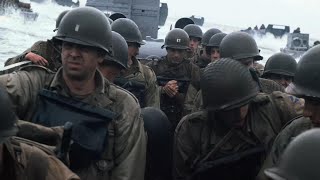
«I knew a lot of Omaha Beach veterans,» says Paul Woodage, a military historian and battlefield guide. «They all said it was the most realistic in terms of intensity and increased sensory experience — everything going on around you, sounds and smells — it did more to change the public's perception of combat than any other movie since.»< /p>Real Private Ryan
The idea — to save the only surviving brother from the battlefield — came to the mind of screenwriter Robert Rodat when he was walking through the cemetery with his young son. The cemetery had a war memorial in memory of the local men who died in battle. Rodat noticed that many members of the same families died in the Revolutionary and Civil Wars. “So, with this little son in my arms and the other sleeping in the house, the thought of losing my son in combat was unspeakably painful,” Rodat said in 1998. “The thought of losing more than one was unthinkable. That's where the first grain of «Saving Private Ryan» came from.
There have been similar examples since World War II. In January 1942, all five Sullivan brothers made headlines when they entered the Navy at the same time. Their mother was unhappy with this. «You know what mothers are like,» said one of the Sullivans' boys. In November, all five died in the sinking of the USS Juno.
Saving Private Ryan drew inspiration from the Niland brothers of Tonawanda, New York — Edward, Preston, Bob and Frederick, also known as «Fritz». In May 1944, Edward was shot down over Burma and presumed dead. Just three weeks later, Preston and Bob were killed during the invasion of Normandy. According to the report of Father Francis Sampson, a Catholic priest in the 101st Airborne Division, Fritz received word that Bob had been killed and buried at Sainte-Mere-Eglise, so they set out to find the grave.
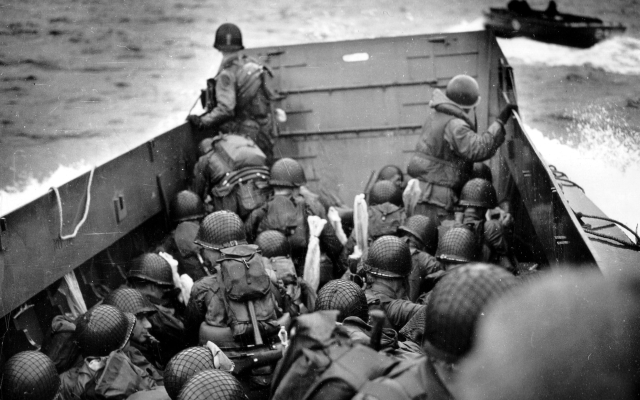 A US Navy barge lands on Omaha Beach on D-Day
A US Navy barge lands on Omaha Beach on D-Day
But instead they found Preston's grave. «Father… that's my brother too,» said Fritz. Sampson helped send Fritz home to his mother. But, like Matt Damon's Private Ryan in the film, Fritz resisted the order. “Fritz refused to return home and was ready to return in handcuffs,” wrote his nephew Pete. «He wanted to stay and fight.» In fact, there was no mission to return him home. And then it turned out to be incredible that the elder brother Edward survived in Burma and was kept by the Japanese as a prisoner of war. Both Fritz and Edward Nyland survived into the early 1980s.
As historian Peter Caddick-Adams points out in his extensive history of the D-Day landings, Sand and Steel, Niland probably sounded too German for Hollywood. Private Ryan may take his name from Cornelius Ryan, author of The Longest Day. Ryan was a correspondent for The Daily Telegraph and watched the events of D-Day from the inside of a B-26 bomber. In 1962, The Longest Day was made into an epic ensemble film, another film that shaped the public's perception of D-Day.
«Saving Private Ryan» was bought in Hollywood by Rodat and producer Mark Gordon, but the studios were not interested. In the 1990s, World War II did not do well at the box office. Gordon, however, turned the script over to Tom Hanks, and Hanks, still enjoying the success of his back-to-back Oscar wins for Philadelphia and Forrest Gump, sought a job with Steven Spielberg.
Hanks also requested that his character be changed; like Spielberg, he wanted more realism. At that stage, Captain Miller looked too much like a Hollywood cliché — like Robert Mitcham chewing cigars. Hanks got a taste of realism along with other actors at a boot camp in England, a rite of passage when he was filming a war film. Technical adviser and U.S. Marine veteran Dale Dye seemed to be delighted by the harsh conditions. “The good thing is that it was terrible, cold, terrible English weather in training, it rained all the time and we were in the mud,” Dai said. «And every morning I ran four or five miles of them.»
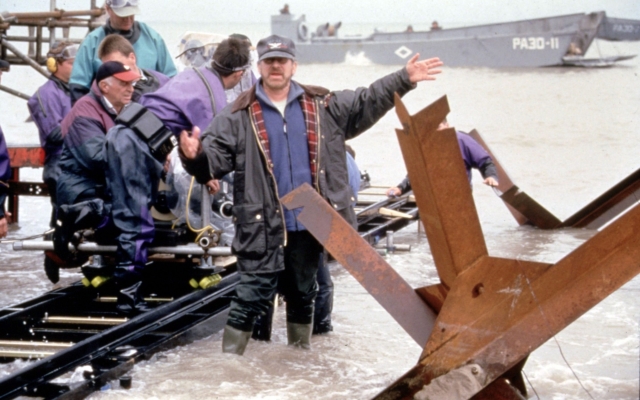 Steven Spielberg on the set of Saving Private Ryan . Photo: Alamy
Steven Spielberg on the set of Saving Private Ryan . Photo: Alamy
In the film, Captain Miller (Hanks), a small-town Pennsylvania schoolteacher, leads C Company of the 2nd Ranger Battalion in the first wave in Omaha. Landing on a stretch of beach codenamed Dog Green — the second westernmost part of Omaha — Miller is accused of opening «D-1 hoax», one of five narrow exits out of Omaha that were guarded by Widerstandsnester (WN) protection. nests.
Before he could crawl even an inch across the sand, Miller suffers from what the soldiers at the time would call «shell shock» — he froze, plunging into another plane of existence, his hands trembling uncontrollably. “The scene where his hands are shaking is just brilliant,” says Paul Wudaj. “I have met and talked with hundreds of World War II veterans. They all talk about how to navigate the line between pretending you're not fucking scared and finding the inner strength to get the job done.»
Pinned down by heavy fire, with troops destroyed and no tanks to back him up, Miller thinks as he goes: his men scavenge weapons and ammunition, blast the Germans with Bangalore torpedoes, and navigate the defensive wall with a makeshift rear-view mirror. (a piece of glass stuck on a chewing gum bayonet).
The real company commander of the 2nd Ranger Infantry Battalion was Captain Ralph E. Goranson. At 41, Hanks was almost twice the age of the real captain — Goranson was only 24.
In fact, C Company landed in the Charlie area, west of Dog Green. As Caddick-Adams detailed, their objective—along with Company A, 116th Infantry—was to clear the narrow D-1 lane leading to Vierville, then advance and attack WN74's stronghold at Pointe de la Perse. They were on their way to Pointe du Hoc, where other Rangers of the 2nd Regiment climbed a 110-foot cliff to disable six cannons (as depicted, though not quite correctly, in The Longest Day).
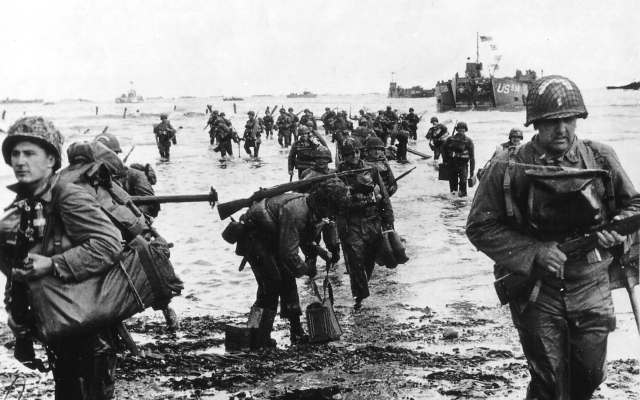 American reinforcements land on Omaha Beach during the D-Day Normandy landings. '
American reinforcements land on Omaha Beach during the D-Day Normandy landings. '
Landing at 6:36 am, Goranson's Rangers were hit by machine gun fire and mortar rounds. An explosion of fire from 88-mm cannons tore off the landing ramp. The mission to destroy WN74 has already failed; instead, Goranson led the men along the base of the cliffs, climbed up and attacked the stronghold of WN73, one bunker at a time. (Part of WN73 was built into the house—Gambier's villa—but the filmmakers did not include the houses and hotels dotted along the actual Omaha beach.) Approaching from the west, as the Germans concentrated their attacks to the east, Goranson took WN73.
In «Saving Private Ryan», it takes about 20 minutes for Miller to break through the German defenses. It took Goranson until noon to control WN73. Goranson commanded 68 men, 39 of whom were killed or wounded. Goranson himself narrowly escaped death when he was alerted by a German grenade sandwiched between his legs. «While it was not part of their mission, Goranson's decision to refocus his small group was probably the first glimpse of success anywhere in Omaha,» Caddick-Adams wrote.
Omaha was five miles long and had 14 defensive strongholds. It was a key area and therefore protected. Lieutenant Colonel Rudder, who led the ascent of the Point du Hoc, told Goranson: «You have the hardest damn job on the whole beach.» (These words are repeated in «Saving Private Ryan» when Dennis Farina's officer tells Miller after Omaha Beach, «It was a tough assignment, so you got it.»)
For Caddick-Adams and Woodage, the network of German trenches and bunkers in Saving Private Ryan is reminiscent of WN72 and WN73. Although, as Woodaj points out, none of the Omaha Beach fortresses looked like the fortress-like bunker featured in the film. The bunker, which is certainly cinematic, is borrowed from observation positions elsewhere along the German Atlantic Wall. “The real bunkers in Omaha tended to be smaller,” Woodadj says. «They should have been hidden.»
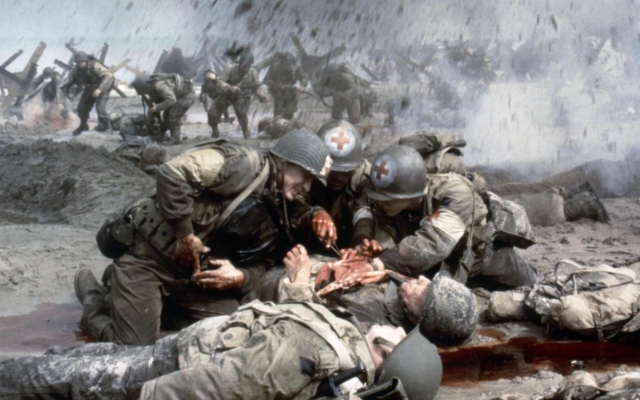 ' gunpowder and decomposing bodies: still from Saving Private Ryan. Photo: Alamy
' gunpowder and decomposing bodies: still from Saving Private Ryan. Photo: Alamy
Wudedge thinks many of the details are accurate. “There are some incredible details about getting a kit right to the beach,” he says. “The assault vests they wear, the insignia is correct, the uniform is correct…they use Bangalore flamethrowers and torpedoes.”
It's also true — as Hanks' Miller says — that tank support was lacking at first. Many tanks sank before reaching the shore; others landed but could not move because of all the obstacles and corpses. Other correct details include the presence of a chaplain climbing over the wounded and performing their last rites while German artillery whistles over him. One of the real chaplains who landed on Omaha was Father Joe Lacy of the 5th Ranger Battalion. A short, chubby man in his 40s, he gave the Rangers some hellish advice as they crossed the English Channel. “When you land on the beach and get there, I don’t want to see someone kneel and pray,” he warned them. “If I do that, I will get up and kick you in the tail. Leave me to pray, and fight yourself.”
At one point, American soldiers fire on the surrendering Germans, a dark moment of Allied atrocities. In fact, the German soldiers speak Czech, implying that they are forced conscripts. “In Normandy, especially in Utah and Sword, there were a lot of Czech, Polish, Russian and other “volunteers” of the east battalion, but probably not in Omaha,” Woodage says. “At least they weren't ordinary. But I love the fact that the film shows that many nationalities actually made up the «German» army at this point in the war.»
Technical adviser Dale Dye described one controversy from the film: that Hanks is indicated on Miller's helmet his rank. Some critics said it was unrealistic because it would make him a target. “It depended on the unit,” Dai said after the study.
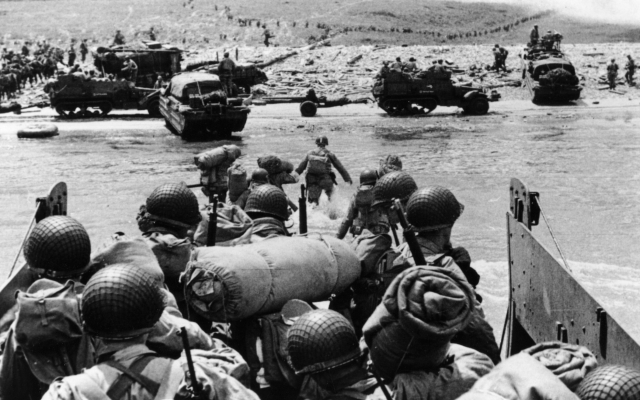 US assault troops and vehicles land on Omaha Beach. Photo: Fox Photos/Getty Where have the Brits been?
US assault troops and vehicles land on Omaha Beach. Photo: Fox Photos/Getty Where have the Brits been?
In one scene after the D-Day massacre, Sergeant Horvath (Tom Sizemore) collects dirt in a jar labeled «France», which he hides along with the jars labeled «Italy» and «Africa» - a cute character detail, but a Hollywood fiction . «It's unlikely that a ranger could have made those previous landings,» Woodadj says. «For almost all the Rangers who landed on D-Day, this was their first battle.» Likewise, sharpshooter Jackson (Barry Pepper) — skilled enough to gouge Herman's eyeball at 450 yards — is something of a cliché. Snipers weren't really part of the US Army in the ETO [European Theater of Operations] in 1944,” Woodadj says. «I'm not saying they didn't have them, but the Germans used snipers much more often than the Allies.»
An oft-cited inaccuracy occurs at the very beginning, when Company C arrives on US LCVP landing craft; in fact the 2nd and 5th Ranger Battalions arrived at the Royal Navy's LCA. The helmsman was supposed to be British, not American as shown in the film (the American helmsman in the film is actually played by a British former Royal Marine Ronald Longridge).
The deliberate inaccuracy puts Saving Private Ryan on par with The Great Escape and U-571, notorious for sidelining the British and dramatizing American glory. Omaha was largely American, but not entirely. Eight of the 15 ships off Omaha were British. Other navies also played their part, including the Canadian, French and Dutch. And later that day, around 17:00, about 180 RAF soldiers landed on Omaha and suffered heavy casualties — 48 people.
As reported in 1998, some British veterans were unhappy with Saving Private Ryan. One Royal Navy helmsman was «disappointed». Another Royal Navy veteran who led the wave of landing craft in Omaha was dissatisfied with the quality of Spielberg's research. «I don't see how he can justify winning an Oscar,» the vet said.
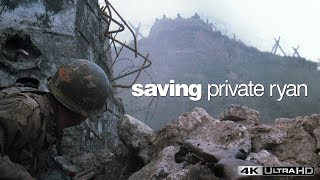
Spielberg made no secret of the fact that Saving Private Ryan is American history. “The British play no part in Saving Private Ryan,” Spielberg told the BBC at the time. “Certainly, the British played an important role in Normandy and in the invasion of Paris. But «Saving Private Ryan» is the story of Omaha Beach at 6:30 in the morning — there were no Brits there or on the Utah beach.
Dale Dye later said that most of the crew were British and understood World War II from a British perspective. “A big part of my job was to sort of get non-British people to look at World War II from an American perspective,” Dai said.
Everyone was under the impression that D-Day was close to disaster. '
There are inaccuracies on the beach. One of the beach railings, wooden ramps going up like log cannons, had been placed incorrectly. In the film, they point to the sea; in real life, they pointed to the beach, and mines could stick to the log, overturning landing craft as they approached.
Details aside, Paul Woodage considers the improvisation depicted during the chaos and confusion at Omaha Beach to be «100% accurate.»
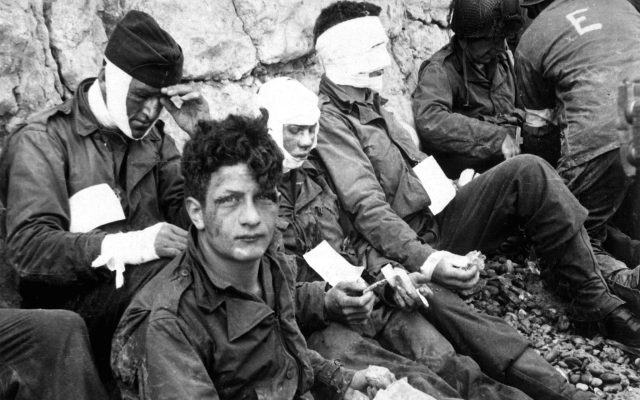 Wounded US soldiers await evacuation on D-Day. Photo: Reuters
Wounded US soldiers await evacuation on D-Day. Photo: Reuters
“Omaha Beach started to crash for various reasons,” he explains. “They were offloaded too far from the coast, there were navigational problems, the naval bombardment was not very accurate, the aerial bombardment was not very accurate, they lost half of their tanks, they were in the wrong place, and there were leadership problems. A whole host of things went wrong.
“The solution was individual acts of initiative and leadership. What they show exactly is that people like Captain Miller and Sergeant Horvath [character played by Tom Sizemore] say, «We're not where we're supposed to be, we need to improvise to get beyond where we're supposed to be.» what's ahead.» The plan flies out the window, so the lieutenants, sergeants, and corporals say, «Let's take everything we have and knock that thing out.»
For Wudaj, one of the biggest mistakes is the misrepresentation of the Omaha invasion. “It left everyone with the idea that D-Day was close to disaster,” he says. “He shows you the Omaha Beach window when things were at their worst. After the first wave landed, there were many deaths and the Americans struggled to get off the beach. The first wave was very bad — we are talking about 85 percent losses. The second wave dropped to 50 percent. The third wave dropped to 20 percent. In about three hours, you could go ashore at Omaha Beach and almost make landfall without any shots being fired. Success in Omaha Beach started badly.»
Omaha is often called the bloodiest beach. True, more men died there, although more men landed there — more than 34,000 people. According to the National D-Day Memorial in Bedford, Virginia, 4,415 people were killed on D-Day — 2,502 Americans and 1,913 other allies, many of whom were British. Of these losses, 2,400 died on Omaha Beach, including crews of warships and landing craft. The first few hours on Gold, Juno and Sword also suffered heavy losses. Canadians — too often overlooked in D-Day stories — lost 340 men on the Juno.
: Omaha beach from Saving Private Ryan «The Americans didn't encounter any Tiger tanks in Normandy»
Once the action moves outside of Omaha, Saving Private Ryan will become largely a fictional adventure. Historical fact doesn't—and perhaps shouldn't—get in the way of telling a perky good story. For example, Private Ryan is part of the 506th Parachute Infantry Regiment of the 101st Airborne Regiment. As can be seen from the film, the paratroopers did not hit the landing zone and were scattered for many miles. But the real 101st Air Assault Division was dropped inland from Utah Beach to take control of the exit routes.
“If there was ever a mission to search for a paratrooper of the 101st Airborne Division — and it wasn’t — it would have started with Utah Beach,” says Woodage.
There are hints of real events. Finding Ryan in the town of Ramell (actually the set was built in Hatfield, England), Miller and his surviving men join the fight to defend the bridge on the Merderet River. Ramel is fictional, but the Merdere River is real.
The battle has shades of the 82nd Airborne Division's Battle of La Fière, a four-day struggle for control of a small stone bridge across the Merdera. The film version truly represents the greatest hits of World War II action movies: Tiger tanks, close combat with the SS, and P-51 Mustangs flying in to save the day. “The Americans didn't encounter a single Tiger tank in the entire Normandy campaign,” Woodadj says. “They often encountered German armored vehicles, but not Tiger tanks. You have P-51 Mustangs because everyone knows them — they're Cadillacs in the sky — but it's much more likely that P-47 Thunderbolts will act as ground support.
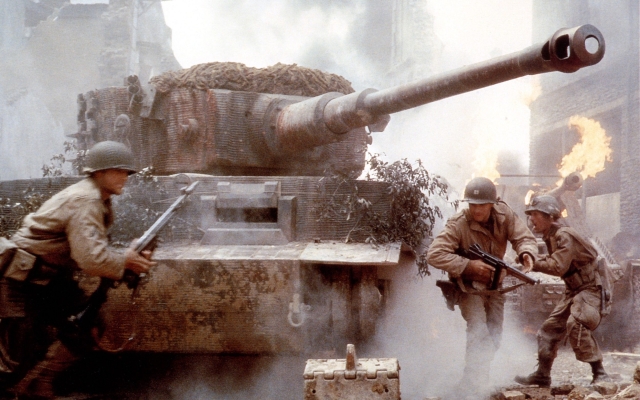 The Tiger tank is actually a disguised Soviet T-55 in Saving Private Ryan. it would not be under their helmets — this is an abbreviation for the Nazi threat in the movies.
The Tiger tank is actually a disguised Soviet T-55 in Saving Private Ryan. it would not be under their helmets — this is an abbreviation for the Nazi threat in the movies.
According to Dale Dye, Spielberg was strongly committed to having Tiger tanks in the film. In an interview for Stephen Jay Rubin's book Combat Films, Dai explained that they couldn't find any Tiger tanks, but did find a couple of Soviet T-55 tanks in England. They used the chassis, rebuilding the hulls to look like Tiger tanks.
Saving Private Ryan was nominated for 11 Oscars and won five. The film's triumph, far beyond historical accuracy, is that it actually takes you there. Not only on Omaha Beach, but in close proximity to the reality of horror: men holding their guts and screaming for their mothers; men dying from tiny bullet holes gushing blood; the look and sound of people who know they are about to die, life fading in their eyes. In the midst of this carnage, he catches a real passion for war: trying to understand unimaginable fear and courage; what it would be like to face it yourself.
Spielberg fulfilled his mission. As he told producer Mark Gordon, «People will feel like they've been to D-Day when they see this thing.»








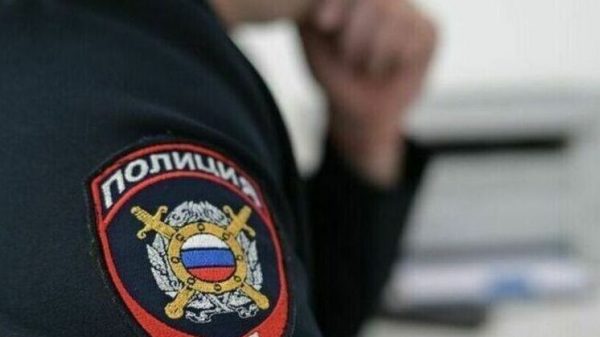


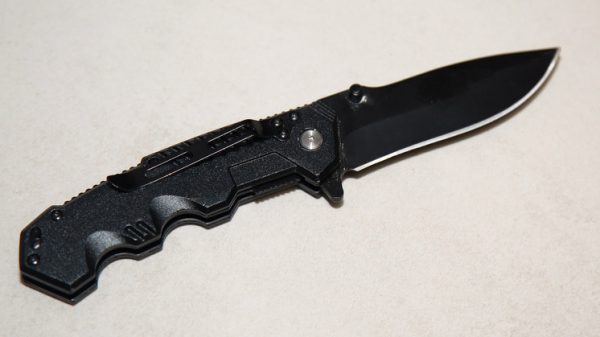






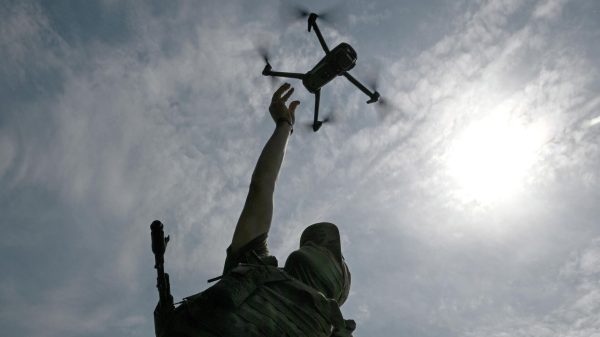



















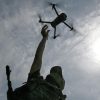















Свежие комментарии